Tahoe RCD does not currently implement control actions for target invasive fish species. However, in 2020, Tahoe RCD completed a joint California Environmental Quality Act (CEQA) and Tahoe Regional Planning Agency (TRPA) Initial Study and Negative Declaration (IS/ND)/Initial Environmental Checklist and Finding No Significant Effect (IEC/FONSE) for the Target Invasive Fish Control Program at Lake Tahoe.
Target invasive fish species are species that are contributing to declines in native and recreational non-native fish, alterations in food-web dynamics, and impairment of water quality. Target invasive species include Smallmouth bass (Micropterus dolomieu), Largemouth bass (Micropterus salmoides), Bluegill (Lepomis macrochirus), Black crappie (Pomoxis nigromaculatus), Brown bullhead (Ameiurus nebulosus), and goldfish (Carassius auratus).
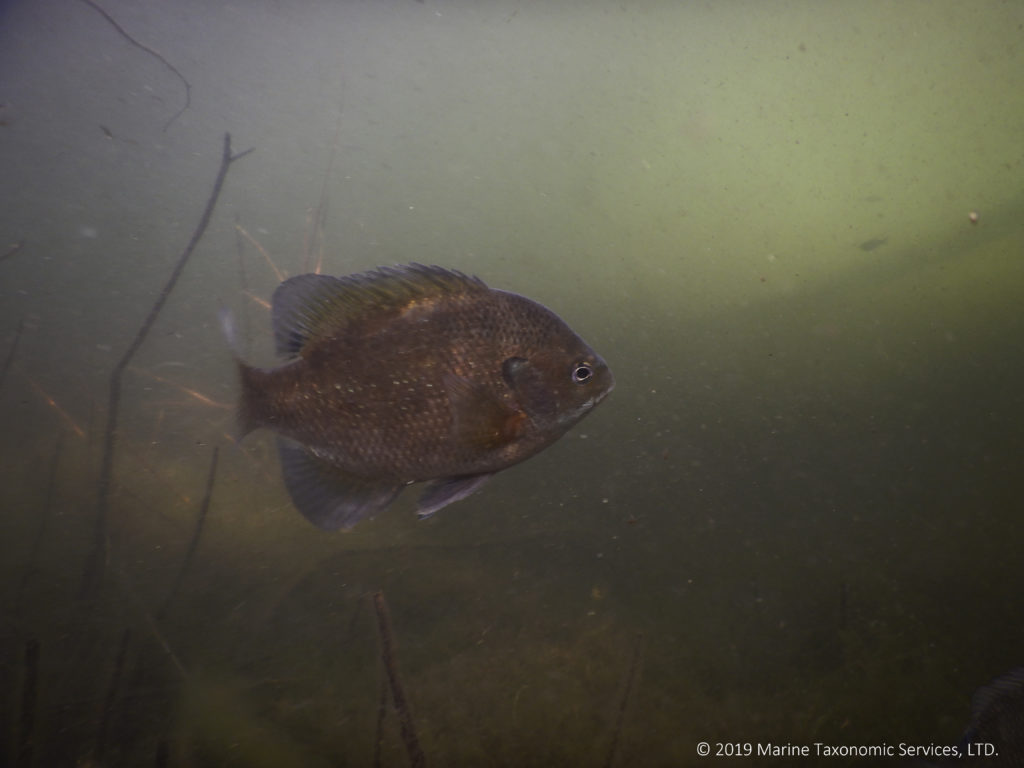
Recreational nonnative fish species (i.e., rainbow trout (Oncorhynchus mykiss), brown trout (Salmo trutta), brook trout (Salvelinus fontinalis), lake trout (Salvelinus namaycush), and kokanee salmon (Oncorhynchus nerka) are not targeted by the proposed program.
The proposed program does not include chemical control methods. The methods that are approved for use are described below:
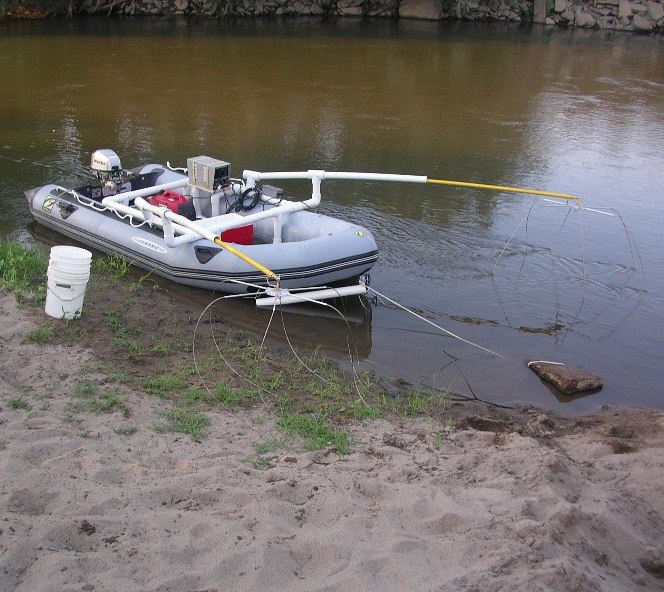
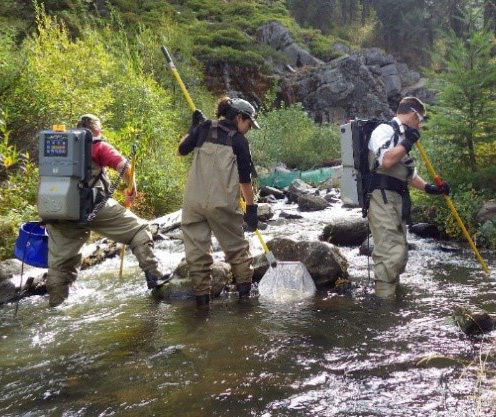
Electrofishing temporarily stuns fish by introducing an electric field to the water so that fish can be captured with hand nets. Boat and backpack electrofishing are proposed for this program.
Boat electrofishing would be performed in water greater than 3 feet deep using generator-powered boom-mounted anodes and a boat-mounted cathode. Boats used for electrofishing can range from small inflatable boats, to larger research vessels. The electric field produced by boat electrofishing devices is effective to a depth of 8–10 feet; therefore, the method would be used in marinas and other shallow water areas. By adhering to the National Marine Fisheries Service (NMFS) Electrofishing Guidelines (NMFS 2000) which specify minimum settings to generate efficient results, adverse effects on aquatic organisms would be minimized. All life stages of the target invasive fish species would be affected by this method. Target fish species stunned by this method would be collected onboard the boat using ¼-inch mesh nylon nets, then counted and transferred to shore. Non-target fish species would be held in live wells or aerated holding containers on the boat and released after completion of electrofishing for each location. Data would be collected on the size and health of the fish and their recovery, as evidenced by their ability to hold an upright position in the water column and return to a normal respiratory rate.
Backpack electrofishing would be conducted in wadable water (less than 3.5 feet) inaccessible to electrofishing boats, particularly tributary streams and shallow margins of the Truckee River. This method could also be used in shallow portions of marinas, the Lake Tahoe shoreline, and marshes. The number of backpack electrofishing units and netters used to capture stunned fish would be adjusted dependent on the size and complexity of the habitat. By adhering to the NMFS Electrofishing Guidelines (NMFS 2000) which specify minimum settings to generate efficient results, adverse effects on aquatic organisms would be minimized. All life stages of the target invasive fish species would be affected by this method. Captured fish would be separated, with target species counted and transferred offsite and non-target species held in aerated containers or instream live cars away from the electrofishing area. Non-target species would be returned to their capture area after their recovery and completion of electrofishing.
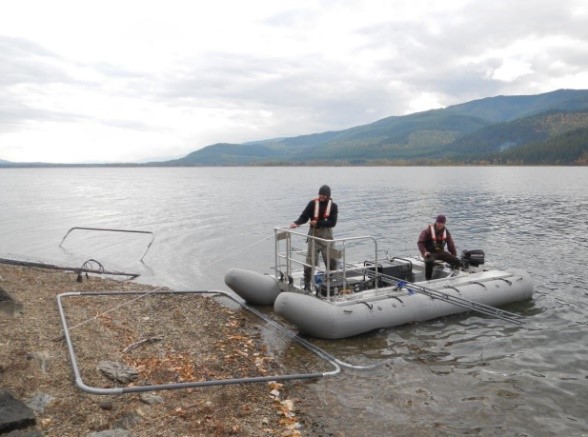
Benthic electrode arrays would be deployed for control of target fish eggs incubating in nests. Benthic electrode arrays kill incubating fish eggs via a lethal electric field which penetrates lake bottom substrates (Brown et al. 2017). The arrays are generator-powered, similar to boat electrofishing, and deployed from a boat. The number and size of arrays would be adjusted for the size and complexity of the habitat. This method can be applied to target fish species’ nests at variable depths, minimizing impacts to non-target species if spawning locations are known. The egg incubation stage of largemouth and smallmouth bass, black crappie, and bluegill would be targeted with this method in marinas, shallow shoreline waters, and possibly deep pools of tributary streams.
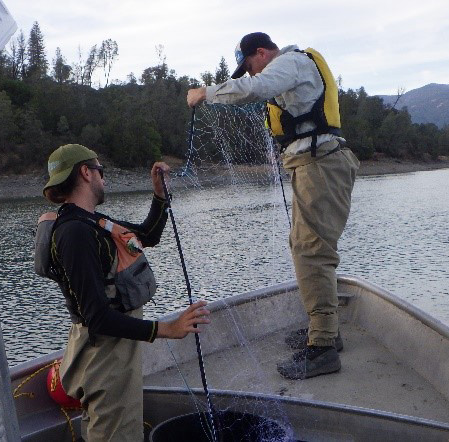
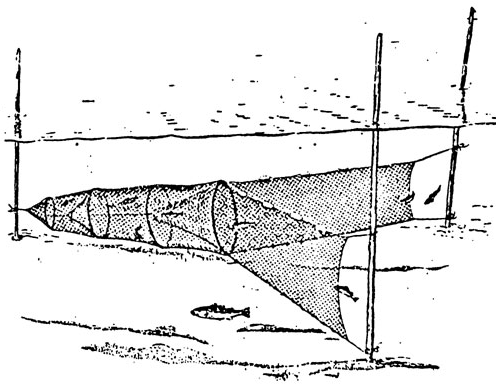
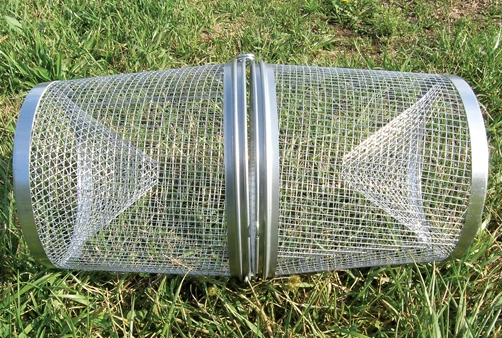
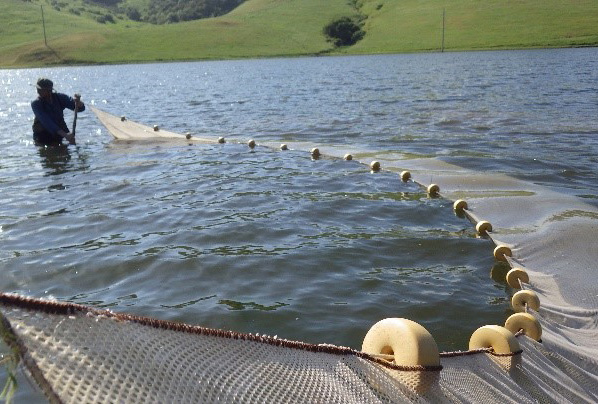
Gillnets are partitions of netting that hang passively in the water column and entangle fish by allowing their head but not their body to pass through the mesh, trapping them by their operculum. Mesh sizes vary from ½ to 4 inches, allowing different sizes of fish or life stages to be targeted. Gillnets can be deployed in any water more than 4 feet deep where there is little to no current, such as lake shoreline waters and marinas. Gillnets would be deployed from small or large boats, depending on the number of nets to be utilized. Gillnetting is size-selective, but not species-selective. Entangled fish could suffer physical injury, elevated stress, and occasionally mortality if trapped for an extended length of time. Pilot capture efforts with multiple mesh sizes would be used to determine the optimal size that results in the capture of target fish species while minimizing bycatch of non-target species. Gillnets are typically deployed for 12–48 hours but would be checked daily (< 24 hours) to remove and relocate non-target fish species. Captured fish would be transferred to live wells or aerated holding containers and separated by target or non-target species. Non-target fish will be released away from active gillnets or back to their capture area after gillnetting is completed and data would be collected on their size, health, and recovery. Captured target fish species would be counted and transferred offsite.
Fyke nets are cylindrical nets with a large diameter, mounted on rings with directional leaders to direct fish toward the net opening and into a series of progressively smaller cone-shaped nets, impeding a fish’s ability to escape the net. Fyke nets would be deployed in shallow water, such as within marinas and along shorelines, or movement channels within marshes. Fyke nets can be deployed from boats or while wading, depending on the number required and the type of habitat. The nets are not size- or species-selective, and adverse effects on non-target fish species are minimal when the nets are emptied regularly (e.g., at least every 24 hours). Captured fish would be transferred to live wells or aerated holding containers and separated by target and non-target species. Non-target fish would be released a short distance away from the net or back to their capture area following the completion of fyke netting. Data would be collected on the size, health, and recovery of each fish. Captured target fish species would be counted and transferred offsite.
Minnow traps are cylindrical or box-shaped traps made of wire or mesh with cone-shaped entry points that allow fish to enter but impede their ability to exit. Minnow traps would be deployed in marinas, shallow shorelines, and marshes where target species are known or expected to occur. The traps can be deployed while wading or from boats, depending on the number required and type of habitat. Minnow traps are not species-selective but do target smaller fish. Adverse effects of the traps are minimal when emptied regularly (e.g., at least every 24 hours). Captured fish would be transferred to live wells or aerated holding containers and separated by target and non-target species. Non-target fish would be released a short distance away from the traps or near their capture area at the completion of minnow trapping. Data would be collected on the size, health, and recovery of the fish. Captured target fish species would be counted and transferred offsite.
Seines are nets with a weighted line along their bottom and floats along the surface, creating a barrier extending from the substrate to the water surface. Seines are pulled through shallow water by either end. By sweeping the seine away from and then towards the shoreline, fish become corralled in a pocket of the net. Deployment of seines by hand is limited to wading depth (e.g., less than 4 feet) and to open water not obstructed by large obstacles such as boulders or large woody debris. Seines are not species- or size-selective but tend to preferentially capture juvenile fish in shallow shoreline habitat, as larger fish are better able to escape the net. Seines would be used to target juvenile fish in marinas, shallow shorelines, slow-moving streams, and marshes where target fish species are known to be present. Adverse effects on non-target species are minimal when the seine is utilized correctly. Captured fish would be transferred to live wells or aerated holding container and separated by target and non-target species. Non-target fish would be released a short distance away from the net or near their capture area at the completion of seining. Data would be collected on the size, health, and recovery of the fish. Captured target fish species would be counted and transferred offsite.

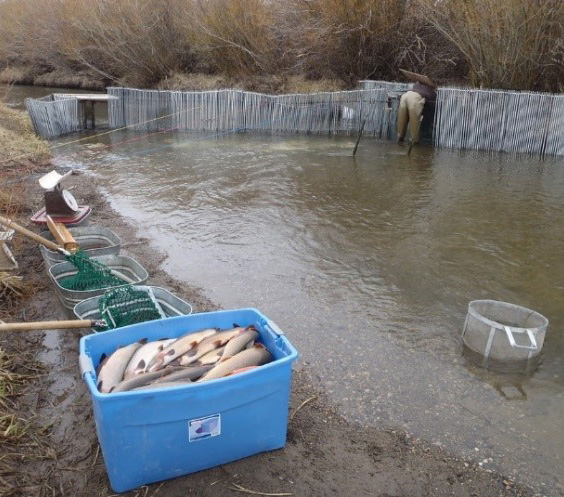
Fish weirs are temporary metal or wooden fences installed across streams to guide fish into a capture pen where target fish species can be collected, and non-target species can pass through. Weirs would be deployed in tributaries at risk of invasion by target fish species or in the lower Truckee River with the intent of capturing all life stages of the target fish species. Fish weirs are not species-selective, but adverse effects are minimal when the capture pen is emptied regularly (e.g., at least every 24 hours). Target fish species may congregate around the barrier, providing an opportunity to capture fish with other methods (e.g., seining or backpack electrofishing). Captured fish would be transferred to live wells or aerated holding containers and separated by target and non-target species. Non-target fish would be returned to the stream to complete their normal migrations or behaviors, and target fish species would be transferred offsite.

Because the daily limit for the target species is already high for most of the target species (e.g., current State of California Freshwater Sport Fishing Regulations set a daily bag limit of 25 bass, bluegill, and crappie), regulatory changes to the Lake Tahoe sport fishery are not included in this control method. Angling-based warm water fish control measures would predominantly rely on promotional and educational programs designed to increase the number of recreational anglers contributing to the harvest of target warm water fish in Lake Tahoe. Both one day or weekend-length special events and longer-term interpretative programs have the potential to increase harvest of target warm water species. Target fish species and life stages of these events or programs would likely be limited to sportfish, including adult bluegill, black crappie, bullhead, and all species of bass and would include shallow waters, marinas, tributaries, and portions of the Truckee River downstream of the lake’s outlet. Fishing may be restricted in the navigation lanes of the Tahoe Keys Property Owners Association.